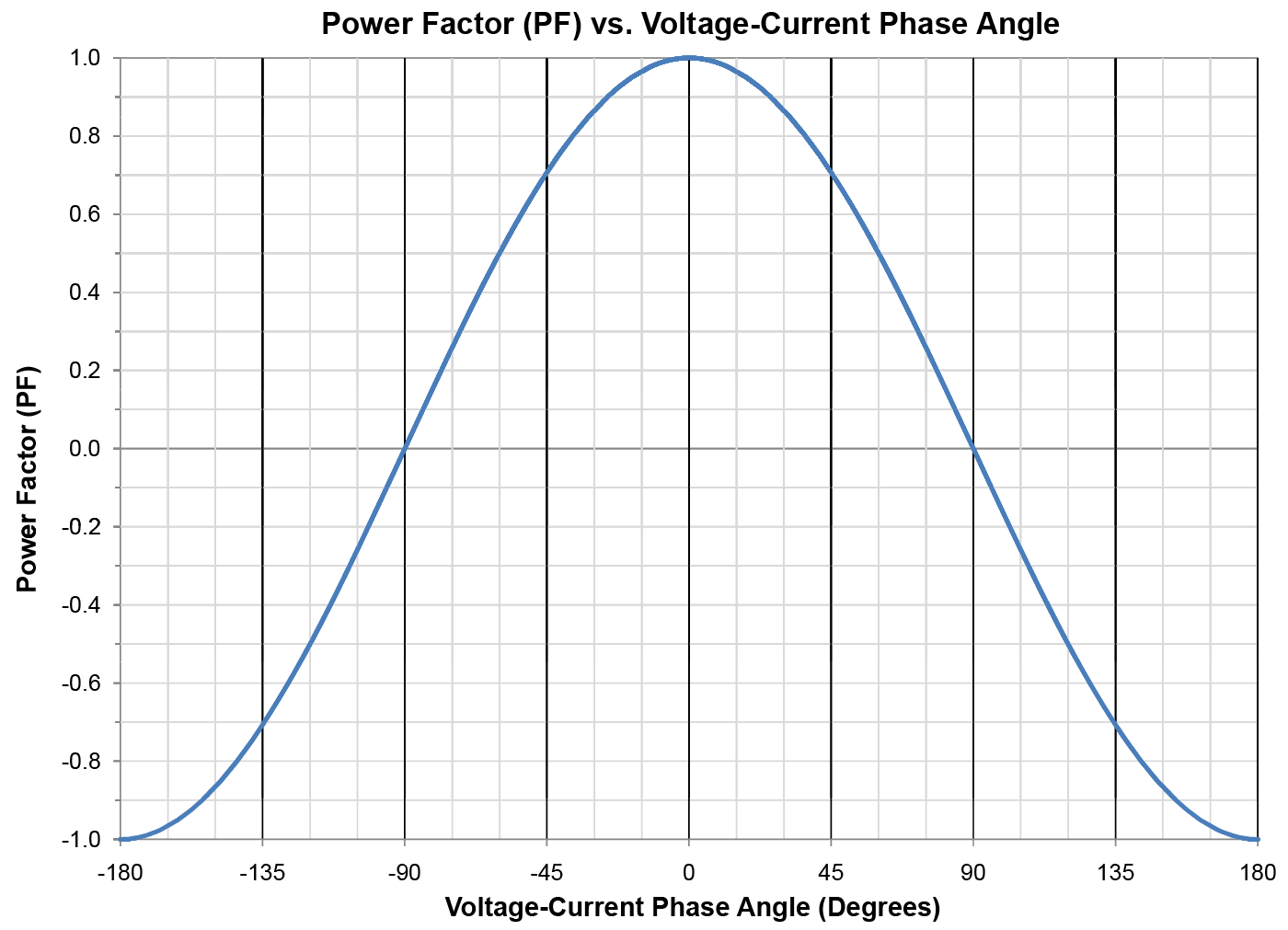Power factor is the ratio of the real power to the apparent power. There are two different ways to compute the power factor: displacement power factor and apparent power factor. Both give identical results for sinusoidal (non-distorted) voltage and current waveforms. The displacement power factor is based purely on the fundamental line frequency (50 or 60 Hz) content, while the apparent power factor includes harmonics in the computation. All series WNB and WNC WattNode® models measure the displacement power factor. For both power factor computations, a positive power factor indicates the load is consuming power (positive power), while a negative power factor indicates the load is generating power (negative power). In other words, the sign of the power factor matches the sign of the power.
Displacement Power Factor (DPF)
The displacement power factor is the power factor due to the phase shift between voltage and current at the fundamental line frequency. For sinusoidal (non-distorted) currents, the displacement power factor is the same as the apparent power factor.  Where
Where  is the phase angle between the fundamental voltage and current. Inductive loads cause current to lag behind voltage, while capacitive loads cause current to lead voltage.
is the phase angle between the fundamental voltage and current. Inductive loads cause current to lag behind voltage, while capacitive loads cause current to lead voltage. 
Apparent Power Factor (APF)
The apparent power factor (APF) is the ratio of real power to apparent power, including harmonics.  Where P is the real power and S is the apparent power. This includes all harmonics. Harmonic currents decrease the power factor, even when there is no phase angle between voltage and current.
Where P is the real power and S is the apparent power. This includes all harmonics. Harmonic currents decrease the power factor, even when there is no phase angle between voltage and current.

